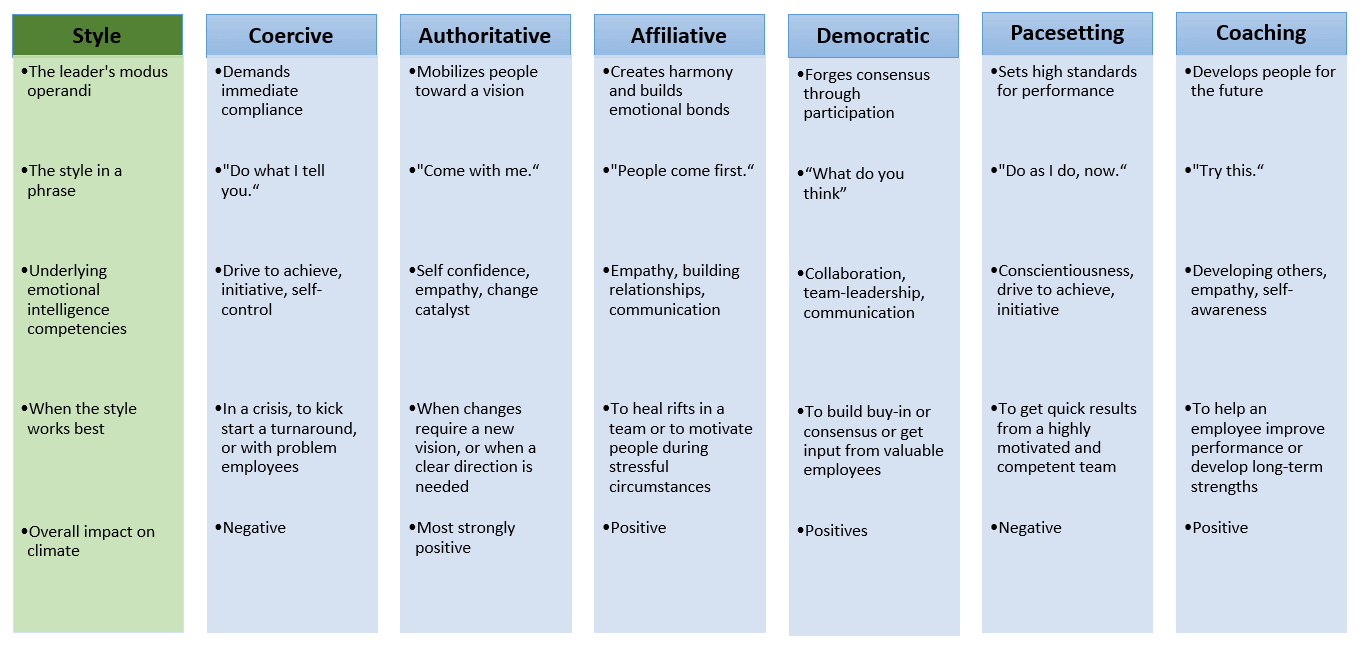What is Project Management Leadership?
Project management is changing rapidly due to advances in Artificial Intelligence (AI), automation, and remote work technologies.
As we adapt to new ways of working – like using remote setups or cutting-edge project management tools – traditional management styles are being reevaluated.
I recently searched Amazon for books using the keyword “leadership” and found 110,897 titles, many featuring “motivational posters” of leadership as a lighthouse guiding ships. However, one of my preferred definitions is from Goffee and Jones (2012):
“Project leadership is about creating the culture and working environment within the project that contributes to its success and performance. It is about the decision-making process, judgment calls, and motivating the team with consistent communication.”
Aligning Leadership Styles with Project Goals
Daniel Goleman (2000) compared different PMI leadership styles to a set of golf clubs. Just as a golfer selects the correct club for each shot, a competent leader uses the most suitable leadership style in project management.
Goleman summarized that leaders who used styles that positively affected the climate had better results than those who did not.
Tannenbaum & Schmidt (1973, p.9) also emphasized that successful leaders are insightful and flexible. They can assess “the most appropriate behavior at any given time and being able to behave accordingly.” The table below summarizes the six styles and their attributes.

What are the 6 Project Management Leadership Styles?
As a project manager, I have experienced other project managers’ leadership styles depending on the situation. As Goleman stated, applying the correct management and leadership styles in the appropriate case is vital.
1. Coercive Leadership
Coercive leadership is rare but resurging in crisis management scenarios, particularly in fast-paced industries that require quick decisions. If this style were summed up in one phrase, it would be “Do what I tell you.”
While this style can be highly effective for quick decision-making, its overuse can stifle creativity and lower team morale. Think of a ship captain in a storm – there’s no room for debate. Daniel Goleman advises using this style sparingly, as it can have a dampening effect on team spirit.
2. Authoritative Leadership
Authoritative and charismatic leadership styles inspire teams by aligning them with a clear vision. Goleman (2000, p.83) describes this style as visionary, motivating people by showing how their work contributes to the broader goals.
The authoritative style works best when the team needs a new vision because circumstances have changed or when explicit guidance is not required.
Applying this style can improve project outcomes and positively impact the organization. If this style were summed up in one phrase, it would be “Come with me.”
3. Affiliative Leadership
Affiliative leadership is a common management style among project managers and positively impacts the project team. It builds strong relationships and prioritizes digital communication tools to maintain team cohesion, especially in remote work settings.
The affiliative leadership style works best when teammates need to heal from a trauma or when the team needs to rebuild trust.
However, it should be used sparingly because relying solely on praise and nurturing can foster mediocre performance and a lack of direction. In essence, the affiliative style can be called “People come first.”
4. Democratic Leadership
Democratic and participative styles now employ real-time collaboration platforms to facilitate more inclusive decision-making processes.
For example, in a Project Management Office (PMO), team members contribute to defining and measuring objectives.
This style is most effective when the leader needs the team to commit to a decision, plan, or goal or when fresh ideas are needed from qualified teammates. In short, it could be summed up as, “What do you think?”
5. Pacesetting Leadership
Pacesetting leaders are integrating AI-driven analytics to set achievable yet challenging team benchmarks. The pacesetting style works best depending on the team’s level of motivation and skill.
It’s commonly applied as a project approaches critical project milestones. Although this style generally harms the project team, it has potential in certain situations.
Kotter (2008, p.7) highlights that creating urgency can be valuable, especially during crises. The pacesetting style could be summed up as: “Do as I do, now.”
6. Coaching Leadership
Coaching leaders increasingly utilize personalized learning platforms to help team members develop specific skills. They also encourage team members to build their capacity and capability as project contributors, positively impacting the project team.
The coaching leadership style is most effective when the leader wants to help teammates build lasting personal strengths. It is especially useful when teammates are resistant to change or the leader needs to improve their proficiency.
If this style were summed up in one phrase, it would be “Try this.”
Adapting Leadership Styles to Modern Project Management Trends
Project managers must adjust and grow with technological advancements and the rise of remote work. These trends shape how we manage projects and lead teams.
Transformational project leaders see these challenges as opportunities. This leadership skill transcends traditional methods, as highlighted in a study on transformational leaders.
Here’s how you can adapt your leadership style to these modern project management trends and continue to lead your teams to success.
AI-Driven Leadership
This master’s thesis highlights how Artificial intelligence (AI) and automation transform project management. AI can assist in decision-making, risk assessment, and interpersonal communication, allowing for a more data-driven leadership approach.
Advanced Tools for Project Management
Modern project management software is not just a tool for coordination – it’s becoming an extension of the project manager’s leadership style.
Features like real-time collaboration, advanced analytics, and resource allocation algorithms enable project managers to lead more effectively, as noted in this study.
Leadership in the Age of Remote Work
Remote work has transformed leadership requirements, demanding new approaches to managing teams.
As supported by NCBI research, project managers must be proficient in leading virtual teams, focusing on outcomes rather than processes, and utilizing digital communication tools effectively.
Hybrid Project Management Approaches
The days of adhering strictly to Waterfall or Agile methodologies are over. Effective project managers are adopting hybrid approaches that combine the best elements of traditional and agile methods. This combination enhances flexibility and responsiveness.
Leading with Emotional Awareness
Emotional intelligence is becoming vital to effective project management. Understanding and managing emotions supports conflict resolution, team motivation, and stakeholder management.
Dr. Travis Bradberry, co-author of Emotional Intelligence 2.0, stated that it is “the strongest predictor of performance.”
Shaping Effective Leadership for Today’s Projects
Effective leadership drives successful project outcomes. The six different leadership styles offer unique benefits based on the situation.
Adapting leadership styles to modern project management trends provides the following benefits:
- AI enhances decision-making and risk evaluation.
- Project management tools enable real-time project collaboration and analytics.
- Remote work focuses on results, relying on digital communication.
- Emotional intelligence drives conflict resolution and motivation.
Recognizing and adapting various transformational leadership styles to align with technological advancements equips project managers to achieve project objectives while promoting a management culture of ongoing improvement and innovation.
Get the Collaborative Project Management Handbook
Improve your leadership, collaboration, and project management skills with “Collaborative Project Management: A Handbook” written by Éamonn McGuinness.

